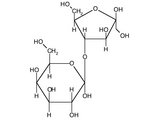* What are the indications for laboratory studies and imaging?
* What dietary adjustments are most effective?
* What medications are helpful?
* When can enemas be used?
* How effective is behavior modification?
These questions are answered in the recommendations at right, derived from a guideline developed and funded by the North American Society for Pediatric Gastroenterology, Hepatology, and Nutrition. The target populations are infants and children with constipation who have no preexisting medical diagnosis.
The evidence categories for this guideline are diagnosis, evaluation, management, and treatment. Outcomes considered are 1) sensitivity and specificity of diagnostic tests; 2) rate of symptomatic relief; 3) prevention and control of symptoms; 4) medication and treatment side effects; 5) quality of life; and 6) bowel movement frequency. Recommendations were grouped by patient age: infants (age <1 year), children (age 1 year and older), and in general for all ages. Functional constipation was defined as fecal retention, unrelated to a medical or anatomic abnormality. Potential benefits and harms of implementing the guidelines were considered in the development. The rating scheme is updated to comply with the SORT taxonomy. (1)
* Guideline relevance and limitations
Constipation is common among infants and children, accounting for 3% to 5% of visits to pediatric outpatient clinics. Males and females are equally affected. (2) In one study, (3) 16% of parents reported constipation in their 2-year-olds.
A long bibliography accompanies this guideline, along with 77 references. The guideline is strengthened by inclusion of 2 algorithms for management of constipation in children aged <1 and >1 year, and consideration of potential harm. It was weakened by lack of a cost-effectiveness analysis.
* Guideline development and evidence review
The constipation guideline committee first determined the scope of the guideline. A literature search in Medline from 1966 through 1997 was performed. These were filtered to include only randomized control trials. A second search strategy identified articles on treatment, including drug therapy, surgery, and "therapy." In total, 160 articles were reviewed for development of the guideline. A systematic review of the literature was performed. Quality and strength of evidence were weighted according to a rating scheme.
The initial guideline was published in 1999. It was reviewed in 2004 and deemed current, after a new literature review and expert committee review.
Source for this guideline
Baker dB, Liptak GS, Colletti RB, et al. Constipation in infants and children: evaluation and treatment. A medical position statement of the North American Society for Pediatric Gastroenterology and Nutrition. J Pediatr Gastroentero/Nutr 1999; 29:612-626.
* Another similar guideline Functional constipation and soiling in children
This 2003 guideline presents methods for diagnosis and treatment of functional constipation, associated with soiling in children. It is only pertinent for children with encopresis: voluntary or involuntary passage of formed, semiformed, or liquid stool in places other than the toilet.
Source. University of Michigan Health System. Functional constipation and soiling in children. Ann Arbor: University of Michigan Health System; 2003. 10 pp. [8 references]
REFERENCES
(1.) Ebell M, Siwek J, Weiss BD, et al. Strength of recommendation taxonomy (SORT): A patient-centered approach to grading evidence in the medical literature. J Fam Pract 2004; 53:111-120.
(2.) Borowitz S. Constipation. eMedicine June 2004. Available at: www.emedicine.com/ped/topic471.htm. Accessed on June 27, 2005.
(3.) Issenman RM, Hewson S, Pirhonen D, et al. Are chronic digestive complaints the result of abnormal dietary patterns? Diet and digestive complaints in children at 22 and 40 months of age. Am J Dis Child 1987; 141:679-682.
Practice recommendations
GRADE A RECOMMENDATIONS
* Mineral oil and osmotic laxatives are safe and effective for children.
* Medications combined with behavioral management can reduce time to remission in children with functional constipation.
GRADE B RECOMMENDATIONS
* An abdominal radiograph can be useful to diagnose fecal impaction.
* Rectal biopsy and rectal manometry are the only studies to reliably diagnose Hirschsprung disease.
* In infants, rectal disimpaction may be carried out with glycerin suppositories. Enemas should be avoided.
* In children, rectal disimpaction may be carried out with either oral or rectal medications, including enemas.
* In infants, juices that contain sorbitol, such as prune, pear, and apple juice, can decrease constipation.
* Osmotic laxatives (barley malt extract, corn syrup, lactulose, and sorbitol) can be used as stool softeners.
* Stimulant laxatives (senna and bisacodyl) can be useful in more difficult-to-treat cases.
GRADE C RECOMMENDATIONS
* A thorough history and physical is adequate to diagnose functional constipation.
* Stool exam for occult blood should be performed in constipated infants and in children with abdominal pain, failure to thrive, diarrhea, or family history of colon polyps/cancers.
* Mineral oil and stimulant laxatives should not be used in infants.
* In children, a balanced diet, containing whole grains, fruits, and vegetables is recommended.
* Polyethylene glycol electrolyte solution, in low doses, can be effective for difficult to treat patients.
Keith B. Holten, MD Clinton Memorial Hospital/ University of Cincinnati Family Practice Residency, Wilmington, Ohio
CORRESPONDENCE
Keith B. Holten, MD, 825 Locust Street, Wilmington, OH 45177. E-mail: keholtenmd@cmhregional.com
COPYRIGHT 2005 Dowden Health Media, Inc.
COPYRIGHT 2005 Gale Group



